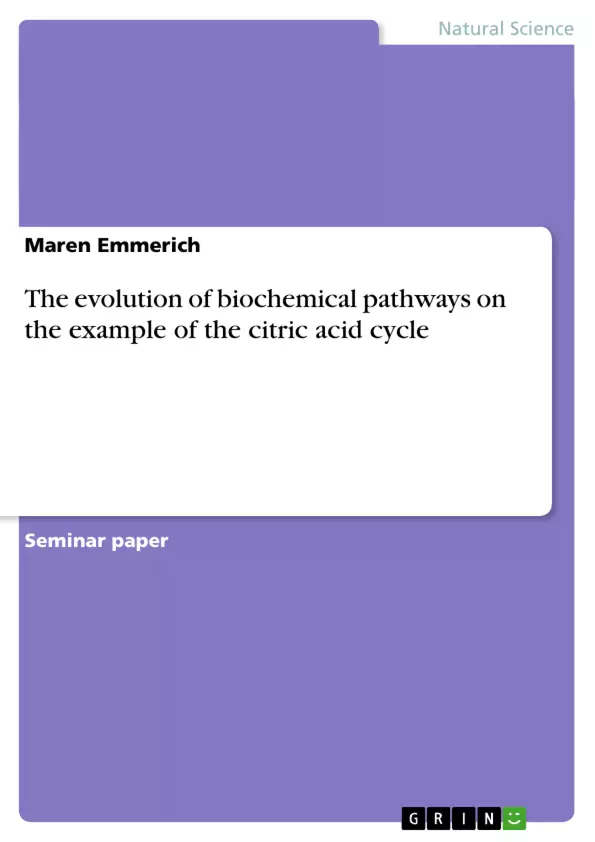Introduction
How and why did life originate and evolve on earth? These might be two of the earliest questions which arose with the development of a brain that was capable of abstract thinking more than 300 000 years ago. People have used myths and religious beliefs to find answers to these questions, but without success in terms of a widely accepted and evidence-based theory about the origin and evolution of life.
Scientists have not started to address these fundamental questions until much more than 100 years ago and are far from being able to explain why these processes happened and are still going on, but considerable progress has undoubtedly been made in understanding how what we call life developed. But what do we call life? Even if the origin of complex organic substances from methane, ammonium, water and hydrogen in the early earth atmosphere did not lead to the origin of living organisms directly, these events unquestionably represented milestones along this path since from these substances, of which amino acids were a very great part, the formation of nucleotides and ribonucleic acid was only one small step ahead. Since ribonucleic acid is able to carry information and to replicate, two decisive features of what we call life were at this point fulfilled. However, the ability to develop on both ontogenetic and phylogenetic levels represent one more precondition for a cluster of molecules to be considered as life. This characteristic is inseparably linked with the existence of a metabolism because one needs to incorporate energy from the environment and to bring it into a form that can be used by the organism in order to build up anything new.
Before an effective metabolism could develop, the replicating machinery, which used DNA instead of RNA by that time, was surrounded by a membrane separating it from the environment; creating the possibility to harvest energy in form of a molecule whose catabolism could be coupled with energy-consuming anabolic reactions. This molecule, ATP, has kept this function ever since its first occurrence.
The existence of the first prokaryotic organisms with such a kind of basic metabolism has been proven and dated back about 3,5 billion years. 2; 7
Evolution has been going on ever since: Driven by the evolutionary forces of mutation, recombination, migration, genetic drift and selection, more and more complex organisms which were adapted better and better to their respective environments developed...
Inhaltsverzeichnis (Table of Contents)
- Introduction
- Which functions of the citric acid cycle justify its term as central biochemical pathway in eukaryotes?
- Which parts of the citric acid cycle are used by bacteria and archaea and what does this tell us about the origins of this pathway?
Zielsetzung und Themenschwerpunkte (Objectives and Key Themes)
This essay aims to explore the evolution of the citric acid cycle (CAC), a central biochemical pathway in eukaryotes. It delves into the pathway's origins, its functions in different organisms, and the factors that led to its evolution.
- The evolution of the CAC from its early origins in prokaryotes to its current form in eukaryotes
- The different functions of the CAC in different organisms, including its role in energy production and biosynthesis
- The role of natural selection in shaping the evolution of the CAC
- The relationship between the CAC and other biochemical pathways
- The importance of the CAC in understanding the evolution of life
Zusammenfassung der Kapitel (Chapter Summaries)
- The introduction discusses the early questions about the origin and evolution of life, highlighting the importance of understanding metabolic processes. It introduces the CAC as a key example of a complex biochemical pathway and its potential role in revealing evolutionary forces.
- The second chapter focuses on the functions of the CAC in eukaryotes. It explains how the CAC is involved in energy production and biosynthesis, highlighting its importance in cellular metabolism.
- The third chapter examines the use of the CAC in bacteria and archaea, exploring the origins of this pathway in early life forms. It discusses the reductive and oxidative versions of the CAC and how they relate to the evolutionary history of the pathway.
Schlüsselwörter (Keywords)
The central keywords and topics of this essay include: citric acid cycle (CAC), evolution, biochemistry, prokaryotes, eukaryotes, energy production, biosynthesis, natural selection, metabolic pathways, origin of life.
- Arbeit zitieren
- Maren Emmerich (Autor:in), 2005, The evolution of biochemical pathways on the example of the citric acid cycle, München, GRIN Verlag, https://www.hausarbeiten.de/document/42357


